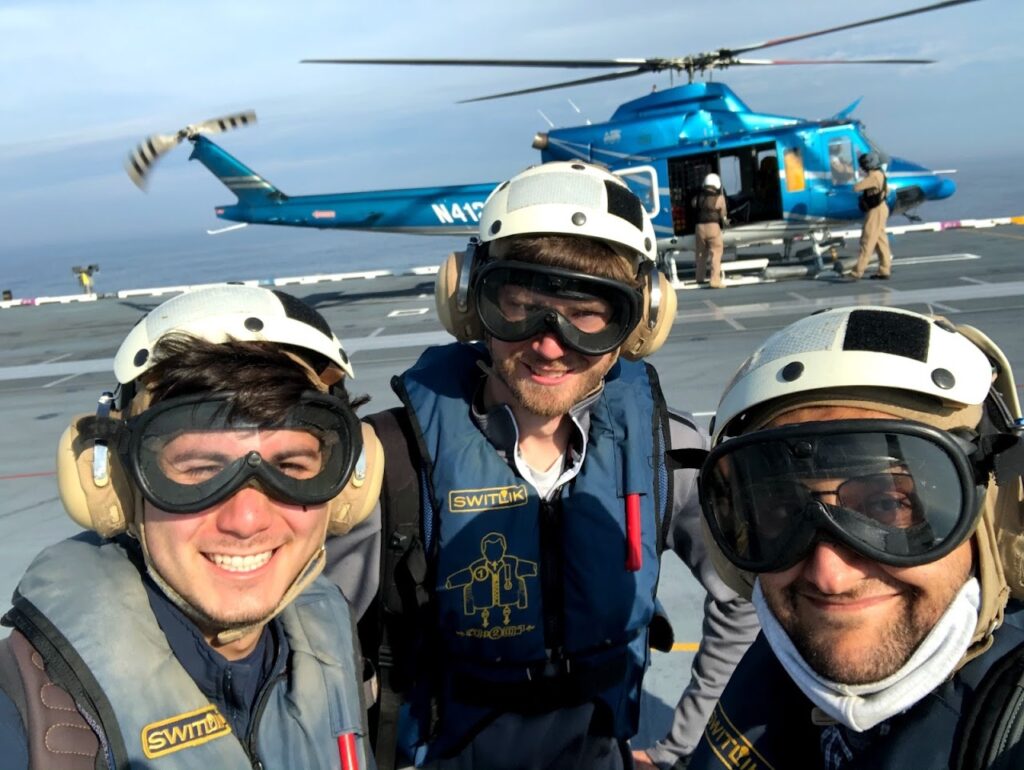One of the most fun projects I have done. We were tasked to measure the RCS of the newest Aircraft Carrier in the fleet. Given the size of the ship, it was decided to do this measurement off-shore by setting up the radar on a helicopter that would circle around the boat. This posed a challenge to smoothly point the radar at the carrier as it circled.
We tackled this problem by mounting our system on a motorized pan & tilt gimbal pedestal and used GPS and IMUs to create a pointing solution to control the pedestal and automatically track the test moving vessel.
I had revamped the GPS and IMU sensor packages and developed a flexible software suite that was using multiple sensors, fondly named minions. The Minions used the best data available from each sensor to create the best known location and inertial data (lat, lon, heading, pitch, roll, and speed). The software used ASP.NET to provide a web interface to monitor and control each sensor.
We mounted a smaller unit on the pedestal, complete with an internal battery backup, to capture the location, heading, and roll for the helicopter. Another unit (and myself!) were setup on the carrier, accounting for the offset of where the GPS antennae were placed to the center of the ship (where we wanted to point). We used COTS ubiquity bullets to create a long range wireless network so that I could control both systems and pass the location data to the helo. Just in case, I provided the operators on the helo an xbox controller that could override the system and control the pedestal if necessary.
When it came to test day, the system worked without a flaw. Once the helo got in range, we established our network link, initialized all the sensors, and started passing the data. The helo operators told me they never had to touch the xbox controller. I monitored the systems throughout the test and produced the track lines of the helo flying cork screws around us.
I got to snap this photo as my team and I got to fly off into the sunset after a job well done. When we flew in, we also experienced getting caught by the arresting wires for landing!

Leave a Reply